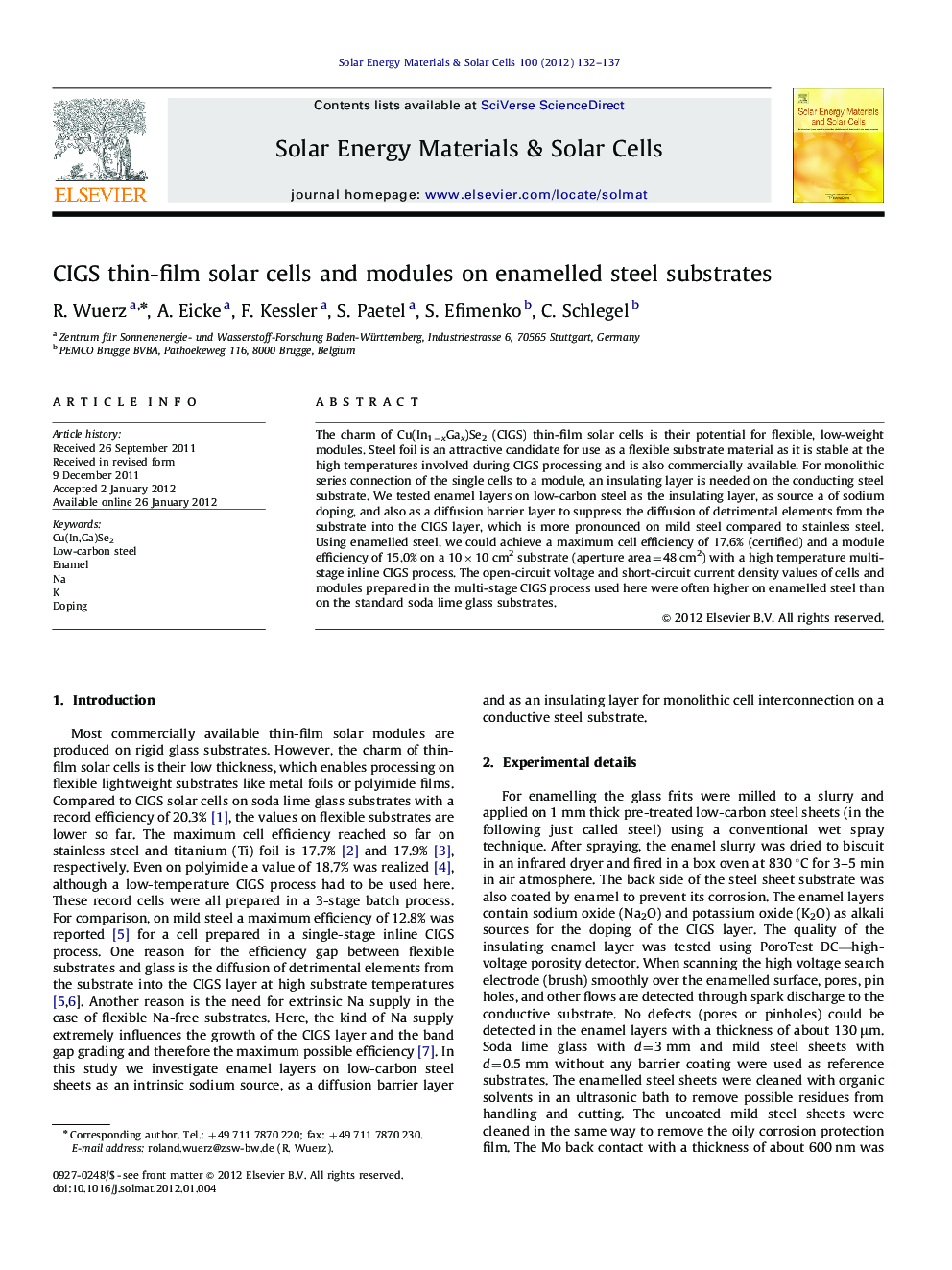| کد مقاله | کد نشریه | سال انتشار | مقاله انگلیسی | نسخه تمام متن |
|---|---|---|---|---|
| 78384 | 49330 | 2012 | 6 صفحه PDF | دانلود رایگان |

The charm of Cu(In1−xGax)Se2 (CIGS) thin-film solar cells is their potential for flexible, low-weight modules. Steel foil is an attractive candidate for use as a flexible substrate material as it is stable at the high temperatures involved during CIGS processing and is also commercially available. For monolithic series connection of the single cells to a module, an insulating layer is needed on the conducting steel substrate. We tested enamel layers on low-carbon steel as the insulating layer, as source a of sodium doping, and also as a diffusion barrier layer to suppress the diffusion of detrimental elements from the substrate into the CIGS layer, which is more pronounced on mild steel compared to stainless steel. Using enamelled steel, we could achieve a maximum cell efficiency of 17.6% (certified) and a module efficiency of 15.0% on a 10×10 cm2 substrate (aperture area=48 cm²) with a high temperature multi-stage inline CIGS process. The open-circuit voltage and short-circuit current density values of cells and modules prepared in the multi-stage CIGS process used here were often higher on enamelled steel than on the standard soda lime glass substrates.
► Maximum cell efficiency of 17.6% on enamelled low-carbon steel.
► Module efficiency of 15.0% on enamelled low-carbon steel.
► Even better cell performance on enamelled steel compared to glass substrate.
► Enamel layer acts as Na and K source for doping of the CIGS layer.
► Potassium (K) impedes the interdiffusion of In and Ga (like Na).
Journal: Solar Energy Materials and Solar Cells - Volume 100, May 2012, Pages 132–137